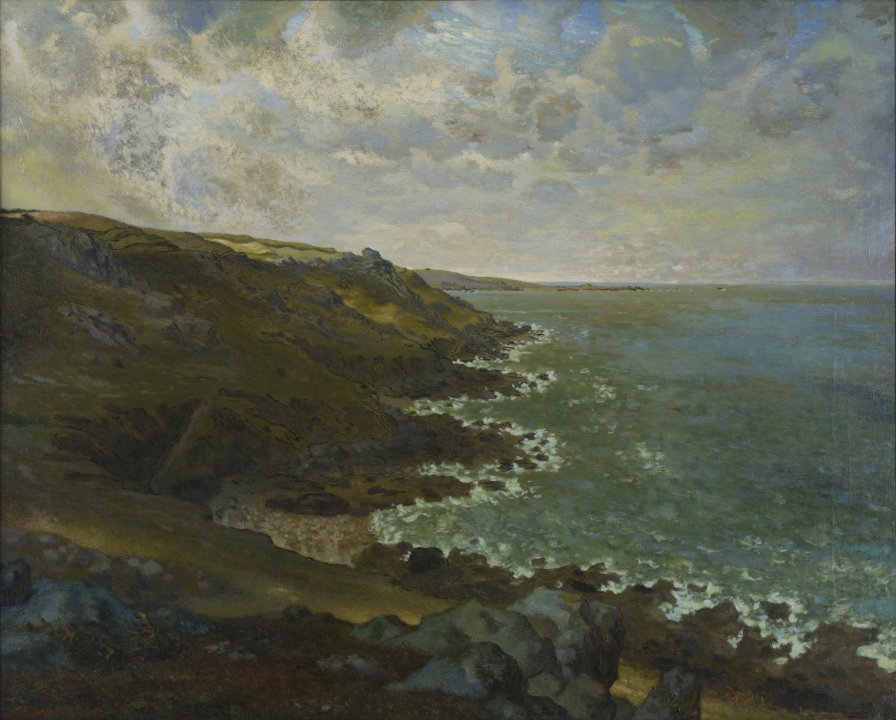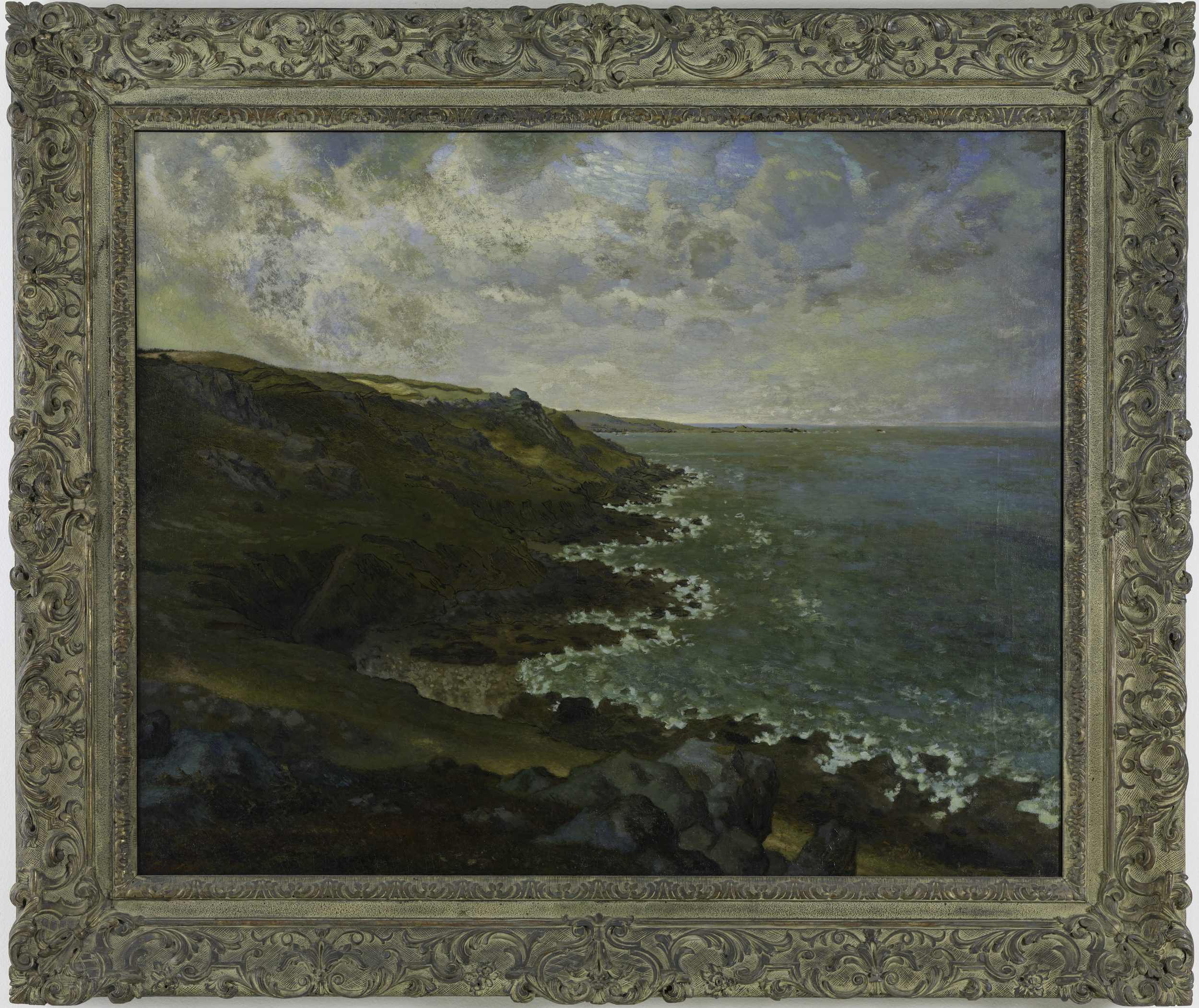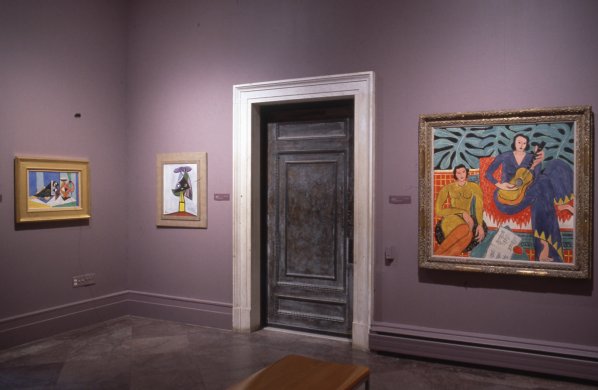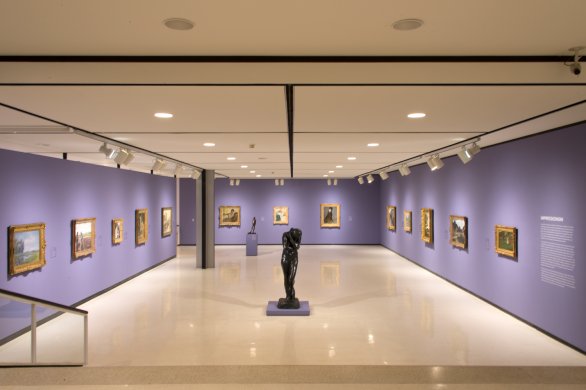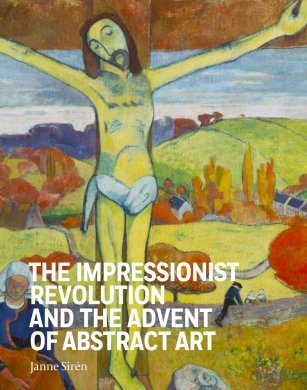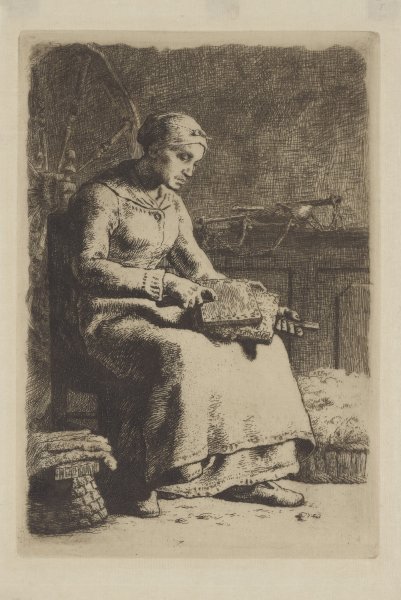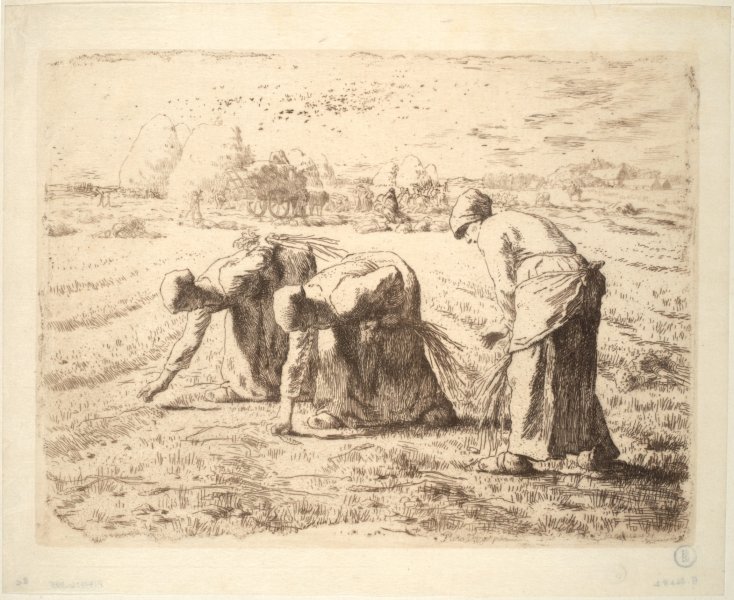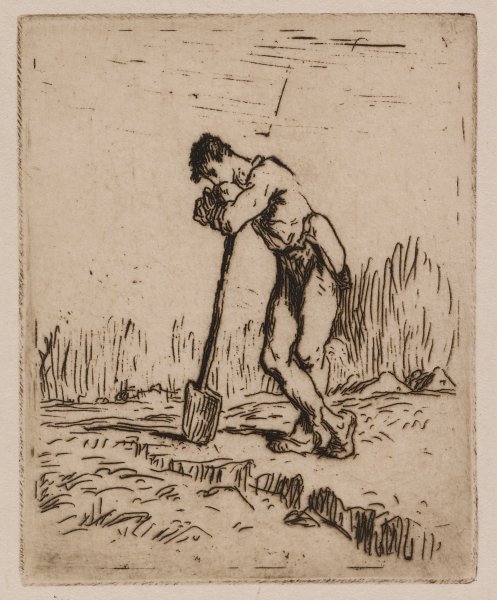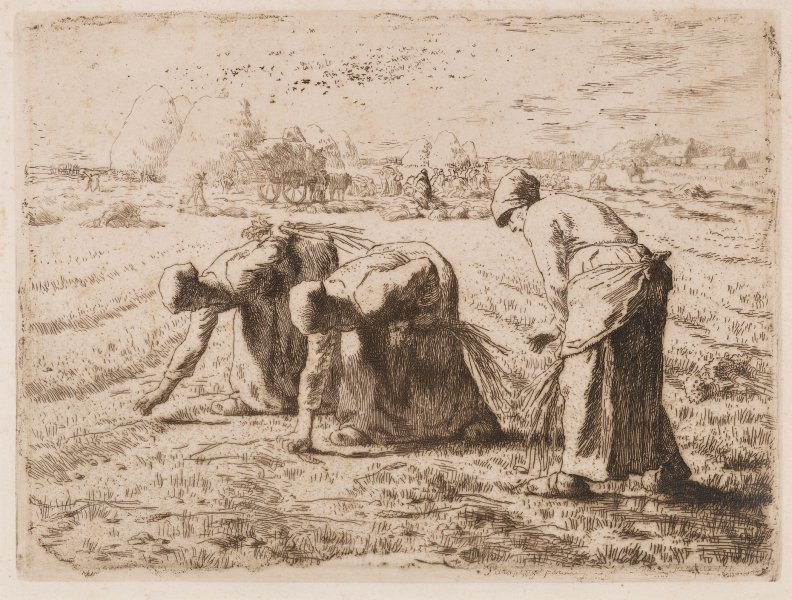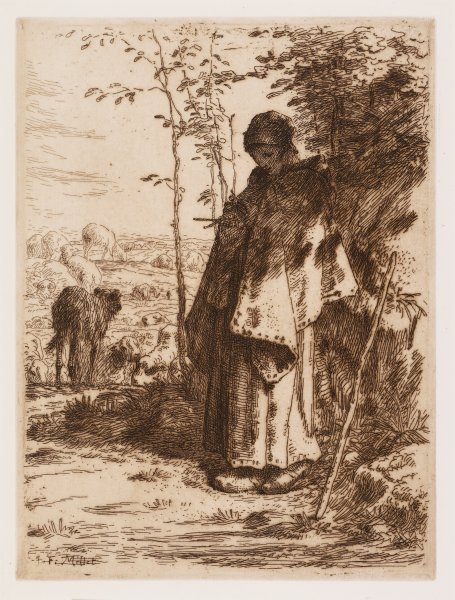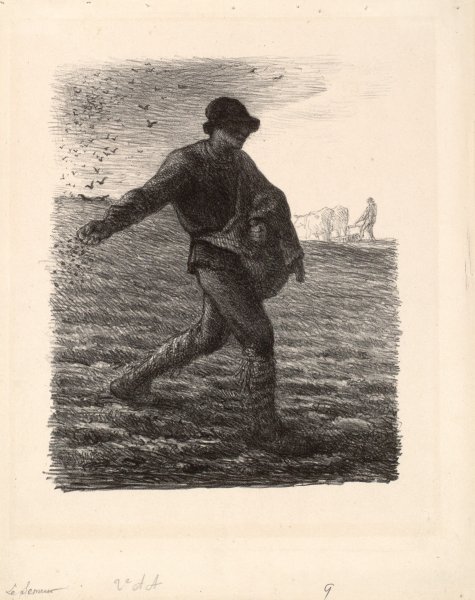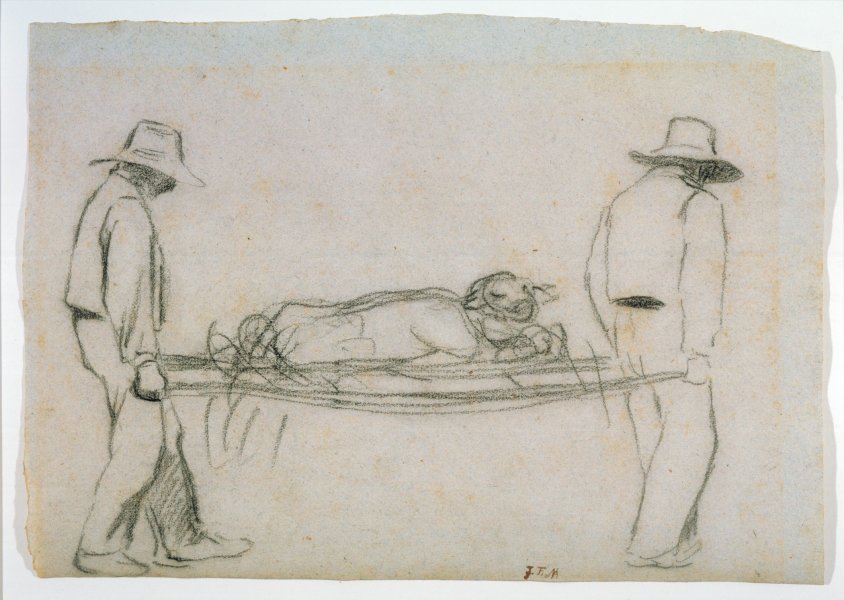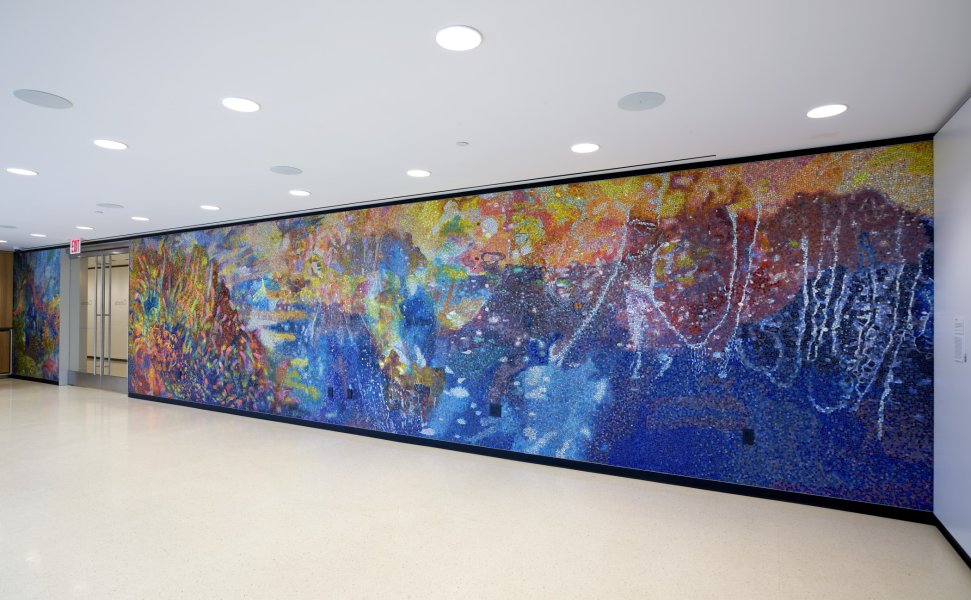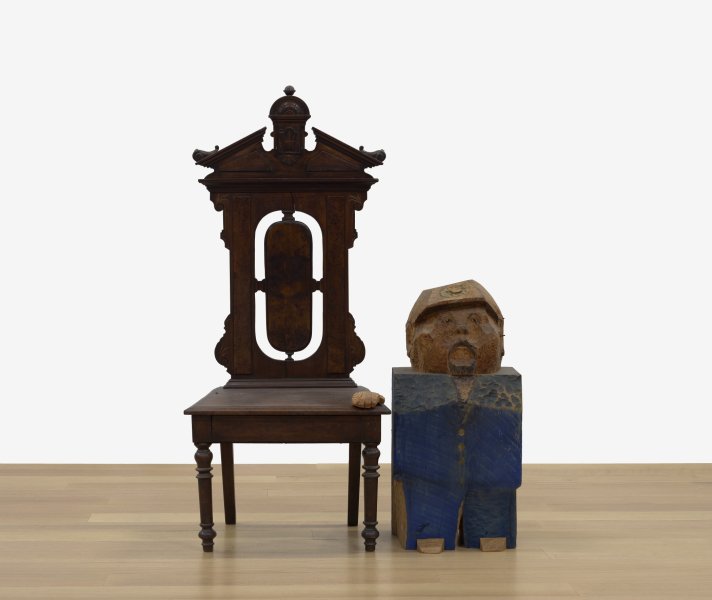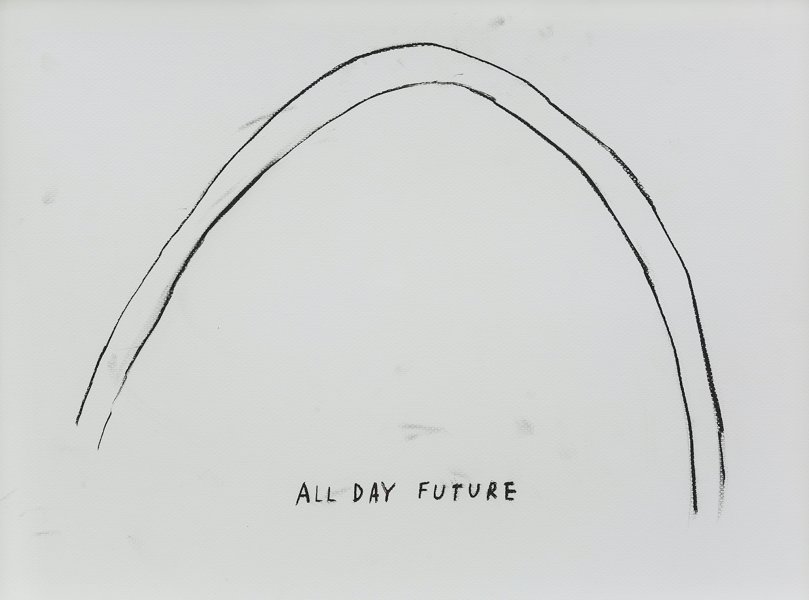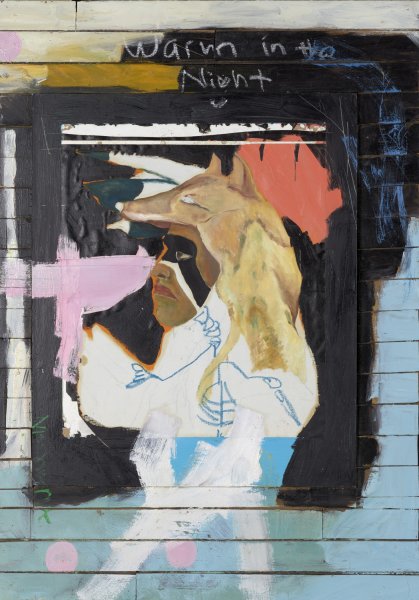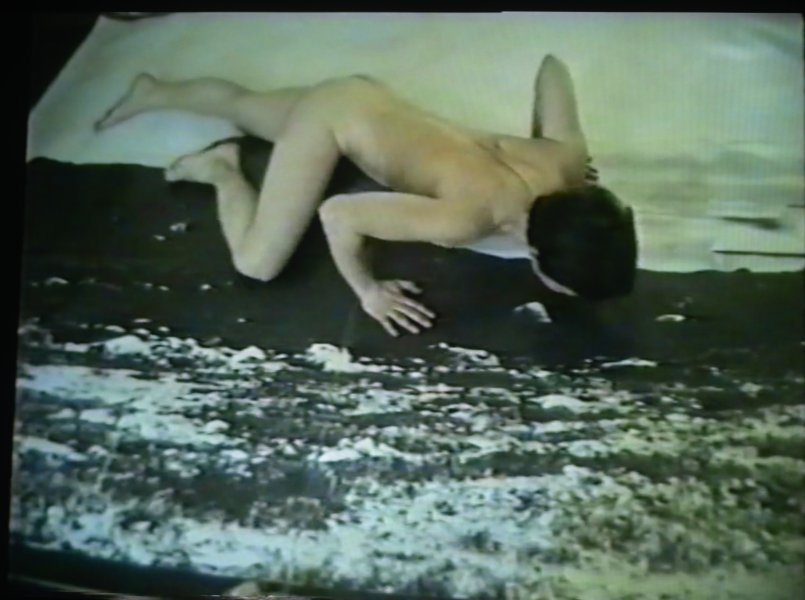Jean-François Millet
French, 1814-1875
Les Falaises de Gréville (The Cliffs of Gréville), 1871-1872
Artwork Details
Currently on View
Collection Highlight
Materials
oil on canvas
Measurements
support: 36 3/4 x 45 7/8 inches (93.34 x 116.52 cm); framed: 48 5/8 x 57 5/8 x 4 1/2 inches (123.51 x 146.37 x 11.43 cm)
Collection Buffalo AKG Art Museum
Credit
Elisabeth H. Gates Fund, 1919
Accession ID
1919:7
In August of 1870, during the Franco-Prussian War, Jean-François Millet returned to Cherbourg, where his family owned a small farm overlooking the choppy gray waters of the English Channel. During this time, he painted several seascapes, including The Cliffs of Gréville, a monumental vision depicting the harsh beauty of the Normandy coastline. In Millet’s earlier work, the countryside served as a backdrop to farm workers performing everyday tasks. His most celebrated images from this period consider the dignity, as well as the privations, of French peasant life. Millet became preoccupied with the landscape as a subject in itself late in his career and was one of the founders of the Barbizon School, an early nineteenth-century group of painters who pioneered the practice of painting outdoors and were key precursors of the Impressionists. This shift in perspective is clear in The Cliffs of Gréville, where Millet highlights the imposing structure of the cliff, wind-sculpted soil, lapping waves, and heavy clouds.
